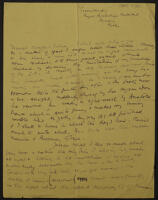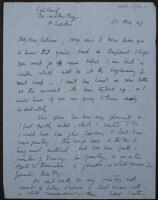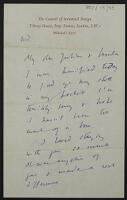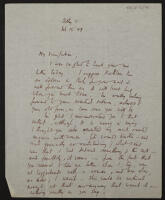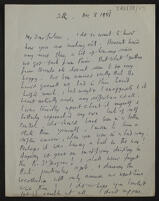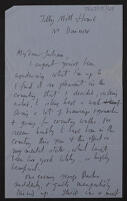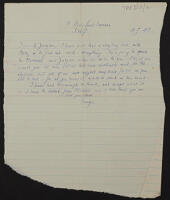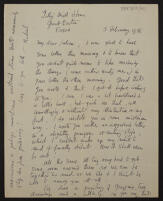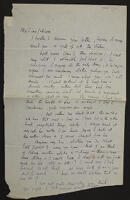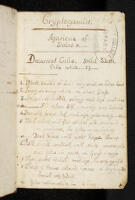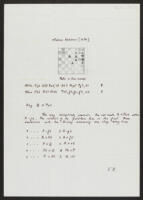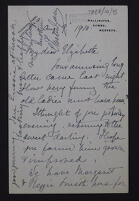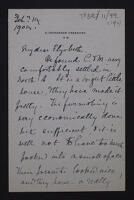Is pleased to have renewed his acquaintance with Mr and Mrs Geoffrey Young. Reflects on the progress of the Sino-Japanese crisis. Gives news of Mary Higgins.
—————
Transcript
26th. August, 1937.
Dear Sansom,
I am very pleased to get a letter from you again and to know that your wife’s sister is Mrs. Geoffrey Young who is now our neighbour and whose acquaintance together with that of her husband we have had the pleasure of renewing.
I am much interested in your views on the Sino-Japanese crisis, which, since you wrote, has broken out in full conflagration. {1} My own view is that it might have been prevented if wiser counsels had prevailed at our Foreign Office a few years back. But now it will not be stopped until very grave events have taken place. But I cannot believe that in the long run China will become a prey of Japan.
You ask about Mary Higgins. She has been living with her husband at 5, Cokeham Lane, Sompting, Nr. Worthing, for several years. Her husband appears to be now permanently bedridden—though to tell the truth—I do not know exactly what is the matter with him. Mary remains her own buoyant self in spite of all her troubles and difficulties, and in some ways she looks as young as ever.
All best wishes to you both in which my wife joins. I remain,
Yours sincerely,
[blank]
G. B. Sansom Esq.,
British Embassy,
Tokyo,
Japan.
—————
{1} The Second Sino-Japanese War is usually considered to have begun with the Battle of Lugou Bridge (also known as the Marco Polo Bridge Incident), which took place on 4 July, but China and Japan did not formally declare war against each other till after the attack on Pearl Harbor on 7 December 1941.







